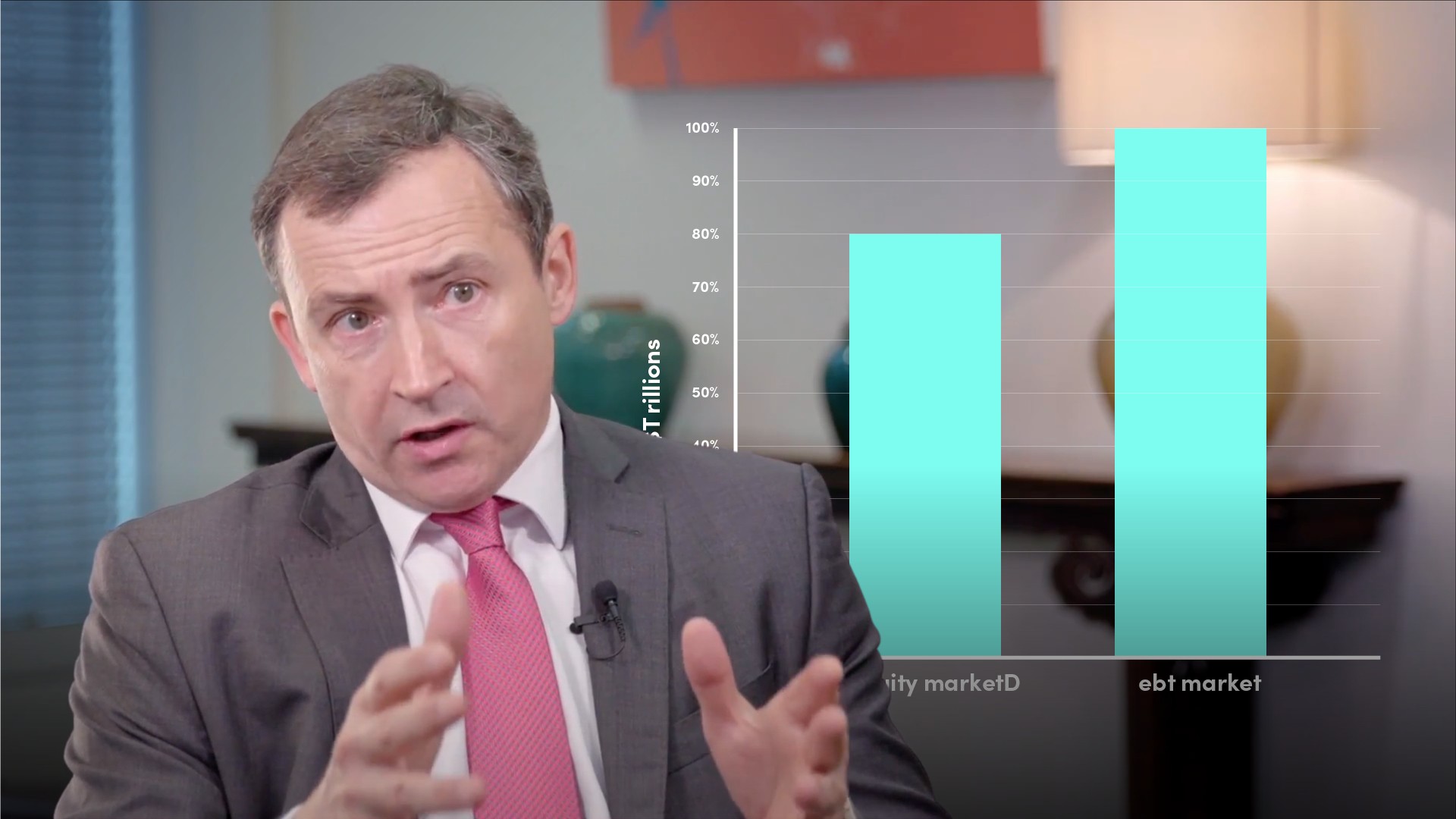
What is Debt Capital Markets (DCM)?

Tim Skeet
35 years: Debt capital markets
Tim provides a detailed overview of the debt capital markets - their uses, users, salient features and how the markets are regulated.
Tim provides a detailed overview of the debt capital markets - their uses, users, salient features and how the markets are regulated.
Subscribe to watch
Access this and all of the content on our platform by signing up for a 7-day free trial.

What is Debt Capital Markets (DCM)?
26 mins 48 secs
Debt capital markets refers to the market for debt issued by sovereign governments, government and supranational agencies, financial institutions and companies in the form of tradable securities, or bonds. Bonds are typically sold to a wide variety of investors and have an active trading, or secondary market. Bonds vary in the terms they offer but also in the riskiness of the issuers.
Key learning objectives:
Identify the principal users of the bond market
Understand how the bond market is segmented by type and category of investor
Outline the steps involved in issuing a bond and which parties are involved
Learn the rules that exist around information disclosure and why
Learn the features that investors look for in bonds
Subscribe to watch
Access this and all of the content on our platform by signing up for a 7-day free trial.
Who are the principal users of the bond market, and how is the market segmented by type and category of investor?
- Governments, public agencies, and supranational agencies (like the World Bank and EIB)
- Companies issuing bonds to refinance bank borrowing or diversify their investor bases. Fixed-rate bonds enable companies to lock in their cost of borrowing
- Financial institutions issue all sorts of bonds to meet funding and regulatory requirements. This includes subordinated debt that counts as quasi capital for regulatory purposes to far safer forms of secured debt such as ‘covered bonds’
There are three specialist areas of the bond market:
- The high-yield market, sometimes called the junk market, for very risky credits
- The emerging market: borrowers from countries where investors charge a risk premium
- The asset-backed securities a.k.a. securitisation market; where investors take the risk of a pool of underlying assets against which their bond is secured
A broad array of investors provide investment capital.
- Aggregators of personal savings: pension funds, insurance companies, fund management companies and investment trusts
- Institutional investors investing money for wealthy clients: hedge funds and private banks serving high net worth customers
- Retail investors: private investors who invest directly
- Central banks and sovereign wealth funds investing in government cash reserves and surpluses
What features do investors look for in bonds?
Debt is priced by reference to the so-called ‘risk-free’ rate, the rate at which debt of prime governments trades. Investors evaluate risk by reference to the best credits and prevailing interest rates in a given market. Timing and market sentiment will also govern pricing.
There are four broad parameters investors look at when deciding if and at what price they will invest:
- The credit quality of the issuer. This might be measured by a credit rating agency
- The size of an issue and the frequency with which an issuer borrows determines the balance of supply and demand. There is a trade-off between liquidity (the ability to readily trade a bond) and illiquidity (where an issuer’s debt is hard to buy or sell in the secondary market)
- The maturity of the debt. Shorter maturities are generally viewed as less risky than longer ones
- Comparables. The price of a bond is determined by reference to where similar credits trade
Taking these parameters into account, investors look to achieve a certain yield i.e. the all-in return achievable from investing in a bond. To calculate the yield, investors need to know:
- The maturity: the date the bond has to be repaid
- The coupon: the interest rate a bond pays, which is usually set for the life of the bond
- The price: bonds are issued around 100% of their face value (or par) but the price will fluctuate under the influence of various parameters, such as interest rate movements and news
What are the steps involved in issuing a bond and which parties are involved?
- DCM specialists advise issuers on market conditions and vie to win mandates to act as arranger and distributor of bond issues (known as the lead manager role)
- The syndicate desk, a group of market specialists, determines timing and pricing
- The transaction management group deals with documentation and due diligence
- If issuers wish to have their bonds listed, they will need to issue a prospectus giving full details of the issuer and the issue itself
- MTN programmes. A ‘shelf programme’ consisting of a standard set of documentation filed every year that enables frequent issuers to issue with minimal additional paperwork
- Investor roadshow. Depending on how well known the issuer is, there may be a need to conduct an investor roadshow where the deal arrangers present issuers to potential investors
- Once an issue is ready from a documentation and legal perspective, the issue is launched. The syndicate will issue an indication of the issue’s pricing
- Lead managers ‘open the books’ (the electronic order system allowing investors to record their interest in a new issue)
- Over three or so hours, the order book fills and books will close
- The precise level of the spread relative to the benchmark is set and the issue is ‘priced’ i.e. the ‘coupon’ is set and price established
- Through the allocation process, investors find out how many bonds they will be given
- The issuer receives the money and the bond switches from the ‘primary’ market to the ‘secondary’ market i.e. it is handed to traders, who quote prices offering to buy or sell bonds
What rules exist around information disclosure and why?
Issuers are bound by the terms of their bonds and have legal obligations around communication and transparency. Regulators have set rules to ensure honest and efficient performance of markets.
There is a strict line between the ‘private side’ of the market (where DCM people work) and the ‘public side’, where traders and salespeople work. The line between them is called the ‘Chinese Wall’ and is designed to be an information barrier. Private side people will know a lot about the issuers’ plans and market aspirations, information which could be unscrupulously used by people to conduct insider trading or manipulate the market to their advantage.
Any private information which might lead to the movement in the prices of securities is known as ‘Price Sensitive information’ (PSI). There are strict controls in place to ensure PSI remains secret and kept away from the public side of markets. This system is overseen and enforced within each investment bank’s compliance staff.
If information is likely to move markets, it must be kept secret or, where required, made available to all investors at the same time. The same applies to the process of book building and communicating with investors in primary and secondary markets. Any shared information must be public and accurate.
Subscribe to watch
Access this and all of the content on our platform by signing up for a 7-day free trial.

Tim Skeet
There are no available videos from "Tim Skeet"






















